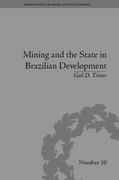4. The data on ps4data.xls (attached in Blackboard )are actual recent housing data for a neighborhood in Northwest Chicago .These data are taken from the American Community Survey. They include the value of each sampled house , its age in years , whether it is a single family detached structure , and the number of rooms . The problem is to use regression analysis to estimate a simple hedonic equation that takes value as the dependent variable and includes the other three variables as the independent variables After estimating this equation discuss the magnitudes of the coefficients 2. The Detroit housing sector consists of three submarkets ,high quality , medium quality and low quality. Assume at first that all three submarkets have perfectly inelastic supply curves . a. Draw supply and demand diagrams for each submarket b. The demand curve in the middle submarket now shifts down as the result of the outmigration of middle class households to the suburbs . Keeping supply curves perfectly inelastic , draw new supply and demand diagrams showing the new equilibrium positions in each submarket . Explain the changes in equilibrium illustrated in these new figures . c. Explain why the assumption of perfect inelasticity in the low -quality market may be unreasonable . Make clear what assumption might be more reasonable . Redraw the initial supply -demand curves for the low quality market under the new assumption d. Using the figure from part c, show the effects in the low quality market of the initial downward shift in demand in the middle submarket . Explain what is happening 9. Does your analysis in part d suggest that the outmigration of middle income households generates any externalities in neighborhoods with low -quality housing ? Explain. 3. Consider the following data table for a commuter making a modal choice between auto , bus and fixed rail in the town of Bigville . Notice the calculations here suggest that auto will be the chosen mode . a. How much of a reduction in line -haul time would be necessary to make fixed rail the chosen mode ? b. Is there a fare reduction that can make bus the chosen mode ? If so how much would it be? c. How much of an increase in parking fees would be necessary to make auto no longer the chosen mode ? Which mode would now be chosen ? d. What happens to the modal choice if the rider has a wage of only $6 per hour







